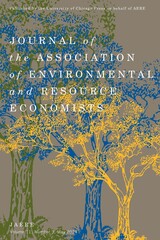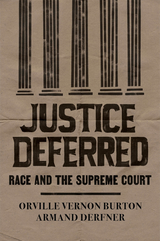3 books by Lee, Christina
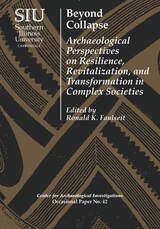
Beyond Collapse
Archaeological Perspectives on Resilience, Revitalization, and Transformation in Complex Societies
Edited by Ronald K. Faulseit
Southern Illinois University Press, 2015
The Maya. The Romans. The great dynasties of ancient China. It is generally believed that these once mighty empires eventually crumbled and disappeared. A recent trend in archaeology, however, focusing on what happened during and after the decline of once powerful societies has found social resilience and transformation instead of collapse. In Beyond Collapse: Archaeological Perspectives on Resilience, Revitalization, and Transformation in Complex Societies, editor Ronald K. Faulseit gathers scholars with diverse theoretical perspectives to present innovative approaches to understanding the decline and reorganization of complex societies.
Essays in the book are arranged into five sections. The first section addresses previous research on the subject of collapse and reorganization as well as recent and historic theoretical trends. In the second section, contributors look at collapse and resilience through the concepts of collective action, eventful archaeology, and resilience theory. The third section introduces critical analyses of the effectiveness of resilience theory as a heuristic tool for modeling the phenomena of collapse and resilience. In the fourth section, contributors examine long-term adaptive strategies employed by prehistoric societies to cope with stresses. Essays in the fifth section make connections to contemporary research on post-decline societies in a variety of time periods and geographic locations.
Contributors consider collapse and reorganization not as unrelated phenomena but as integral components in the evolution of complex societies. Using archaeological data to interpret how ancient civilizations responded to various stresses—including environmental change, warfare, and the fragmentation of political institutions—contributors discuss not only what leads societies to collapse but also why some societies are resilient and others are not, as well as how societies reorganize after collapse. The implications of the fate of these societies for modern nations cannot be underestimated. Putting in context issues we face today, such as climate change, lack of social diversity, and the failure of modern states, Beyond Collapse is an essential volume for readers interested in human-environment interaction and in the collapse—and subsequent reorganization—of human societies.
Essays in the book are arranged into five sections. The first section addresses previous research on the subject of collapse and reorganization as well as recent and historic theoretical trends. In the second section, contributors look at collapse and resilience through the concepts of collective action, eventful archaeology, and resilience theory. The third section introduces critical analyses of the effectiveness of resilience theory as a heuristic tool for modeling the phenomena of collapse and resilience. In the fourth section, contributors examine long-term adaptive strategies employed by prehistoric societies to cope with stresses. Essays in the fifth section make connections to contemporary research on post-decline societies in a variety of time periods and geographic locations.
Contributors consider collapse and reorganization not as unrelated phenomena but as integral components in the evolution of complex societies. Using archaeological data to interpret how ancient civilizations responded to various stresses—including environmental change, warfare, and the fragmentation of political institutions—contributors discuss not only what leads societies to collapse but also why some societies are resilient and others are not, as well as how societies reorganize after collapse. The implications of the fate of these societies for modern nations cannot be underestimated. Putting in context issues we face today, such as climate change, lack of social diversity, and the failure of modern states, Beyond Collapse is an essential volume for readers interested in human-environment interaction and in the collapse—and subsequent reorganization—of human societies.
[more]
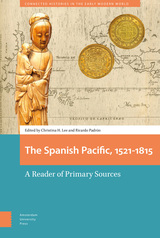
The Spanish Pacific, 1521-1815
A Reader of Primary Sources
Christina Lee
Amsterdam University Press, 2020
The Spanish Pacific designates the space Spain colonized or aspired to rule in Asia between 1521--with the arrival of Ferdinand Magellan--and 1815--the end of the Manila-Acapulco galleon trade route. It encompasses what we identify today as the Philippines and the Marianas, but also China, Japan, and other parts of Asia that in the Spanish imagination were extensions of its Latin American colonies. This reader provides a selection of documents relevant to the encounters and entanglements that arose in the Spanish Pacific between European, Spanish Americans, and Asians while highlighting the role of natives, mestizos, and women. A-first-of-its-kind, each of the documents in this collection was selected, translated into English, and edited by a different scholar in the field of early modern Spanish Pacific studies, who also provided commentary and bibliography.
[more]
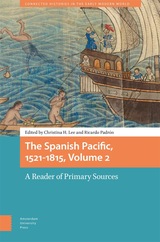
The Spanish Pacific, 1521-1815, Volume 2
A Reader of Primary Sources
Christina Lee
Amsterdam University Press, 2024
This second collection of primary sources in English translation ranges across a gamut of places and moments in the early modern Spanish Pacific. It may be used in conjunction with Volume 1 or on its own. While its focus continues to be on the encounters and entanglements that arose in the Spanish Pacific, it more strongly emphasizes the challenges faced by secular and ecclesiastical authorities in their attempts to control a distant colony and reshape its culture, from the complex forms of identify formation in the diverse world of the colonial Philippines to the complexities of inter-imperial rivalry in East and Southeast Asia as a whole. As with Volume 1, each document is introduced by a specialist in the field and includes a list of suggestions for further reading. An introductory essay surveys current work in the field of early modern Spanish Pacific studies and provides a lengthy bibliography.
[more]
READERS
Browse our collection.
PUBLISHERS
See BiblioVault's publisher services.
STUDENT SERVICES
Files for college accessibility offices.
UChicago Accessibility Resources
home | accessibility | search | about | contact us
BiblioVault ® 2001 - 2024
The University of Chicago Press


